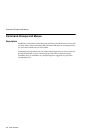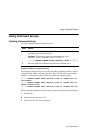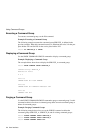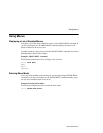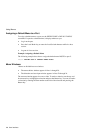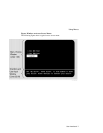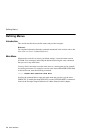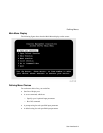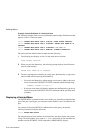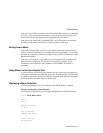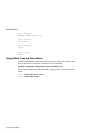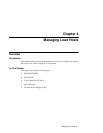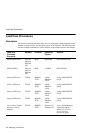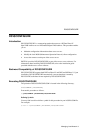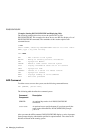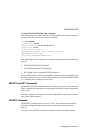
Defining Menus
3-10 User Interface
Example: Sample Definition of a Menu Selection
The following example shows one way to define the selection Open Telnet Session that
appears on line 5 of the main menu:
Local> CHANGE MENU MAIN LINE 5 DISPLAY "OPEN TELNET SESSION"
Local> CHANGE MENU MAIN LINE 5 P1PROMPT "ENTER HOST NAME OR IP
ADDRESS"
Local> CHANGE MENU MAIN LINE 5 P1DEFAULT "16.195.1.1"
Local> CHANGE MENU MAIN LINE 5 EXECUTE "CONNECT TELNET%P1"
The menu selection defined in this example does the following:
1 The following text displays on line 5 of the menu choices window:
OPEN TELNET SESSION
2 When you press the Return key, the following prompt displays in the directions
and user input window:
ENTER HOST NAME OR IP ADDRESS
3 The next step depends on whether you simply press the Return key or type a host
name or address before pressing the Return key.
— If you press the Return key without typing a host name or address, the access
server executes the CONNECT TELNET command with the default string:
CONNECT TELNET 16.195.1.1
— If you type a host name or IP address and then press the Return key, the access
server executes the CONNECT TELNET command with the specified name
or address.
Displaying a Selected Menu
The ENTER MENU command enables you to display any menu that is enabled on the
port. If the port is privileged, you can enter a menu whether or not it is enabled on the
port.
For example, if the menu HOSTS is enabled on the current port, you enter the
following command to display this menu:
Local> ENTER MENU HOSTS
The menu display has item numbers for all menu lines that have display and execute
strings. The item numbers are in order (1, 2, 3, etc.) and usually do not match the line
numbers used in SET MENU LINE commands or SHOW MENU displays.



